#Sattvic food
Explore tagged Tumblr posts
Text
The Sattvic Diet: A Guide to Eating for Mental Clarity and Spiritual Growth
In a world filled with processed foods, fast-paced lifestyles, and constant mental stimulation, finding balance and inner peace can seem like an elusive goal. Many ancient traditions emphasize the connection between food and the mind. Ayurveda, India’s ancient system of holistic healing, provides one of the most comprehensive approaches to eating for mental clarity and spiritual growth.
The Sattvic diet promotes purity, harmony, and balance in both body and mind. By following a diet centered around fresh, natural, and nourishing foods, practitioners can cultivate a peaceful state of being, improve their mental health, and enhance their spiritual well-being. This article explores the principles, benefits, and practical steps for adopting a Sattvic diet, helping you align your nutrition with a more mindful and balanced way of life.

#blogger#blogs#blog#tumblog#india#blogging#reading#my writing#hindu#ayurveda#holistic health#nutrition#ayurvedic#healthy living#wellness#sattvic#sattvic food#healthy food#mental health#healthcare#healthylifestyle#physical health#longevity#health and wellness
0 notes
Text

5 Ayurvedic Tips That Will Completely Revolutionize Your Health
Ayurveda, the ancient Indian system of medicine, emphasizes balance in all aspects of life to achieve optimal health. Rooted in natural and holistic principles, Ayurveda offers timeless wisdom that can help modern lifestyles become healthier and more harmonious. Here are five Ayurvedic tips to guide you toward a healthier lifestyle.
1. Start Your Day with Warm Water and Lemon
Mornings set the tone for your entire day. Ayurveda recommends starting your day with a glass of warm water mixed with freshly squeezed lemon juice.
This simple practice helps detoxify your body, kick-starts your metabolism, and aids digestion. It also prepares your digestive system to absorb nutrients effectively throughout the day.
For added benefits, you can include a pinch of turmeric or honey. These ingredients enhance the cleansing process and provide a boost of antioxidants.
2. Follow a Balanced Daily Routine (Dinacharya)
Dinacharya, or the daily routine, is a fundamental concept in Ayurveda.
Sticking to a consistent schedule for waking up, eating meals, exercising, and sleeping can harmonize your body’s internal clock. Aim to:
Eat your heaviest meal during lunch, when your digestive fire (Agni) is strongest.
Avoid late-night meals to promote better sleep and digestion.
Sleep and wake up at the same time every day to maintain a healthy circadian rhythm.
3. Prioritize Sattvic Foods
A Sattvic diet, comprising fresh, light, and nutrient-rich foods, is a cornerstone of Ayurvedic nutrition. This type of diet includes fruits, vegetables, whole grains, nuts, seeds, and dairy products in their purest forms. Sattvic foods nourish the mind and body while promoting clarity and inner peace.
For those looking to adopt a healthier lifestyle or lose weight, integrating Sattvic foods into your diet is transformative. Learn more about the Sattvic Diet Plan for Weight Loss and discover how it can support your journey to holistic well-being.
4. Practice Mindful Eating
How you eat is just as important as what you eat. Ayurveda stresses the importance of mindful eating—eating without distractions, chewing thoroughly, and listening to your body’s hunger and fullness signals. This practice improves digestion, prevents overeating, and fosters a deeper connection with your food.
Some tips for mindful eating:
Avoid eating in front of screens.
Chew each bite thoroughly.
Express gratitude before meals to cultivate a positive mindset.
5. Engage in Regular Yoga and Meditation
Physical activity and mental well-being go hand in hand. Incorporating yoga and meditation into your daily routine can enhance your overall health.
Yoga strengthens the body, improves flexibility, and boosts energy levels. Meanwhile, meditation reduces stress, promotes mental clarity, and enhances emotional resilience.
Try starting with a 10-minute yoga session or a short guided meditation each morning. Gradually increase the duration as you become more comfortable.
Conclusion
Adopting Ayurvedic practices doesn’t require a complete lifestyle overhaul. Start with these simple yet effective tips to create lasting, positive changes.
Whether it’s sipping warm lemon water in the morning or exploring a Sattvic diet, every small step counts toward a healthier and more balanced life.
Embrace these Ayurvedic tips today and experience the profound benefits they bring to your mind, body, and spirit.
1 note
·
View note
Text
Discover the Beauty of Viveda Wellness Village with Sangram Singh

Sangram Singh speaks volumes about the enchanting experiences of Viveda Wellness Village one can expect from this destination. One cannot help but be fascinated by the prospect of embarking on a beautiful quest that commences at Viveda. His enthusiastic suggestions to "visit here" serves as an alluring invitation to anyone seeking a holistic retreat that nurtures the mind, body, and soul. It's evident that Sangram Singh has found something truly special in this wellness village, making it a enthralling destination to consider for those in pursuit of tranquillity and rejuvenation.
Sangram's description of Viveda Wellness Retreat as a "complete mind body soul place" underscores the retreat's commitment to holistic well-being. The integration of physical, mental, and spiritual elements within its serene surroundings promises a harmonious experience. Whether you're looking to unwind, revitalise, or simply find a respite from the demands of daily life, Viveda seems to offer a comprehensive haven for those seeking a balanced and fulfilling journey towards better health and inner peace.
Viveda Wellness Retreat, stands out as a haven of holistic well-being and rejuvenation.This wellness retreat is a sanctuary for individuals seeking to escape the hustle and bustle of everyday life and embark on a transformative journey towards improved health and happiness. Viveda Wellness Retreat offers a comprehensive range of programs and services, all designed to cater to the physical, mental, and emotional well-being of its guests.
Visitors to Viveda Wellness Retreat can expect a harmonious blend of ancient wellness practices and modern amenities. The retreat's team of experienced and knowledgeable experts guide guests through a range of wellness activities, such as yoga, meditation, spa treatments, and personalised nutrition plans. The tranquil surroundings provide the perfect backdrop for relaxation and self-discovery, making it an ideal destination for those looking to detoxify their bodies, shed stress, and find balance. Viveda Wellness Retreat is not just a place to unwind; it's a destination for revitalising the body, nourishing the soul, and ultimately achieving a healthier, happier self.
Nestled amidst the serene landscapes of Nashik, Viveda Wellness Retreat offers a tranquil escape for those seeking holistic wellbeing and relaxation. The retreat is a sanctuary where one can embark on a journey towards Zen-like tranquility, embracing the healing powers of nature and rejuvenating their mind, body, and soul.
Viveda's wellness programs are meticulously designed to provide guests with a comprehensive approach to health. Through a blend of yoga and meditation, individuals can find inner balance and mindfulness, tapping into the immense healing potential of these practices. In the heart of the retreat, the spa and therapies offered are designed to soothe and rejuvenate, enhancing one's overall health and vitality.
The retreat's sattvic and Asian cuisine complements the wellness journey, offering nourishment that aligns with the principles of a healthy, balanced diet. It's not just about eating; it's about nourishing your body with foods that promote vitality and healing.
Viveda Wellness Retreat provides more than just a relaxing getaway; it offers an opportunity for guests to tap into their inner Zen and connect with their holistic wellbeing. Here, you can escape the stress of daily life and immerse yourself in an environment designed to rejuvenate your body and spirit. It's a place where you can embrace the healing powers of nature and embark on a transformative journey towards better health and wellness.
In summary, Viveda Wellness Retreat in Nashik is an idyllic destination for those seeking a harmonious blend of ancient wisdom and modern wellness practices. By integrating yoga, meditation, spa treatments, and sattvic cuisine, guests can experience a profound sense of healing and rejuvenation. Whether you're looking to escape the hustle and bustle of daily life or simply prioritize your health and wellbeing, Viveda offers a comprehensive approach to holistic wellness that can help you achieve a state of Zen-like serenity and balance.
#Sangram Singh#Zen#Health Healing powers#Viveda#Nashik#Wellness programs#Retreat#holistic Wellbeing#relaxing getaway#spa and therapies#sattvic food#yoga#meditation
1 note
·
View note
Text

Lunch/dinner ~
June 22, 2024
Simple kitchari with vegetables
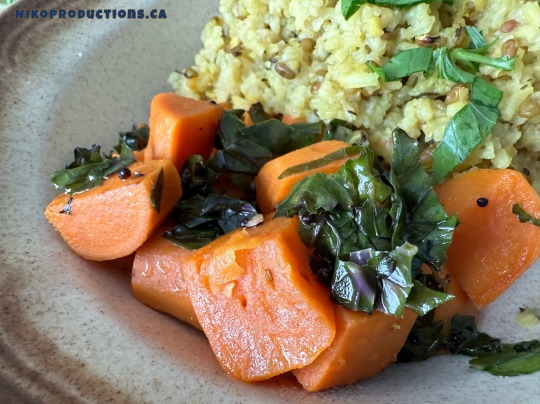
AUGMENTING: basmati rice and organic yams 🍚 🍠
EXTRACTIVE: organic mung beans and (more fresh) kale from the garden 🫘 🥬



It takes approximately an hour and fifteen minutes to prepare and cook this delicious meal 😌
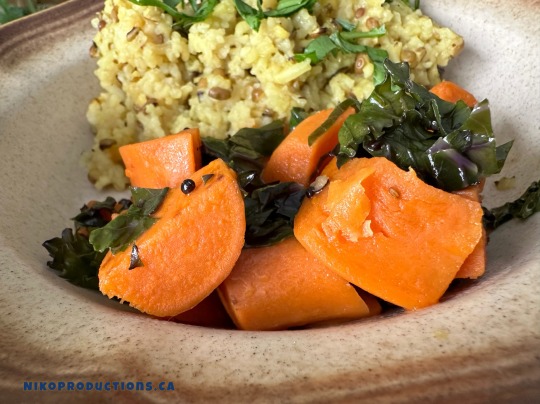
#Food #Nourishing #Sattva #Sattvic #FoodPics #Vegetarian #Healing #Ayurveda #Ayurvedic #Agni #Digestion #Life #Gratitude
2 notes
·
View notes
Text
Healthy Vegetarian Recipes for Weight Loss
Incorporating healthy vegetarian recipes into your diet can be an excellent way to lose weight while enjoying delicious and nutritious meals. A vegetarian diet is naturally rich in fruits, vegetables, whole grains, and plant-based proteins, all of which are essential for maintaining a healthy weight and overall well-being. Below are some wholesome vegetarian recipes that are perfect for those looking to shed a few pounds.
1. Quinoa and Vegetable Stir-Fry
Ingredients:
1 cup quinoa
2 cups water
1 tablespoon olive oil
1 onion, chopped
2 garlic cloves, minced
1 bell pepper, chopped
1 zucchini, chopped
1 carrot, julienned
1 cup broccoli florets
2 tablespoons soy sauce (low sodium)
Salt and pepper to taste
Fresh coriander for garnish
Instructions:
Cook the quinoa: Rinse the quinoa under cold water. In a medium saucepan, bring the quinoa and water to a boil. Reduce heat to low, cover, and simmer for 15 minutes or until the water is absorbed.
In a large pan, heat olive oil over medium heat. Add the onion and garlic, sautéing until soft and fragrant.
Add the bell pepper, zucchini, carrot, and broccoli to the pan. Stir-fry the vegetables for about 5-7 minutes or until they are tender-crisp.
Add the cooked quinoa and soy sauce to the pan. Mix well, cooking for another 2 minutes to blend the flavors.
Season with salt and pepper, and garnish with fresh coriander before serving.
2. Spinach and Chickpea Salad
Ingredients:
2 cups fresh spinach leaves
1 cup canned chickpeas, drained and rinsed
1/2 cup cherry tomatoes, halved
1/4 cup cucumber, diced
1/4 cup red onion, thinly sliced
1 tablespoon olive oil
1 tablespoon lemon juice
Salt and pepper to taste
1 tablespoon roasted sunflower seeds
Instructions:
In a large salad bowl, combine the spinach, chickpeas, cherry tomatoes, cucumber, and red onion.
In a small bowl, whisk together olive oil, lemon juice, salt, and pepper.
Pour the dressing over the salad and toss to coat the ingredients evenly.
Sprinkle roasted sunflower seeds on top before serving.
3. Lentil and Vegetable Soup
Ingredients:
1 cup red lentils
1 tablespoon olive oil
1 onion, chopped
2 garlic cloves, minced
2 carrots, sliced
2 celery stalks, sliced
1 zucchini, chopped
1 can diced tomatoes
4 cups vegetable broth
1 teaspoon cumin
1 teaspoon paprika
Salt and pepper to taste
Fresh parsley for garnish
Instructions:
Rinse the lentils under cold water. Set aside.
In a large pot, heat olive oil over medium heat. Add the onion and garlic, sautéing until soft and translucent.
Add the carrots, celery, and zucchini to the pot. Cook for about 5 minutes, stirring occasionally.
Stir in the diced tomatoes, vegetable broth, lentils, cumin, and paprika. Bring the mixture to a boil.
Reduce the heat, cover, and simmer for 25-30 minutes or until the lentils and vegetables are tender.
Season with salt and pepper to taste. Garnish with fresh parsley before serving.
Conclusion:
These healthy vegetarian recipes are packed with nutrients and are ideal for anyone on a weight loss journey. However, it's important to remember that everyone's body is different, and what works for one person may not work for another. Before making any significant changes to your diet or trying new recipes for weight loss, it's crucial to consult with a qualified dietician. You can also reach out to Dietician Natasha Mohan for personalized dietary guidance. For those interested in exploring a holistic approach to nutrition, she offers a Sattvic diet food chart that may align with your wellness goals.
1 note
·
View note
Text
Fueling Wellness: Embracing the Power of a Nourishing Diet
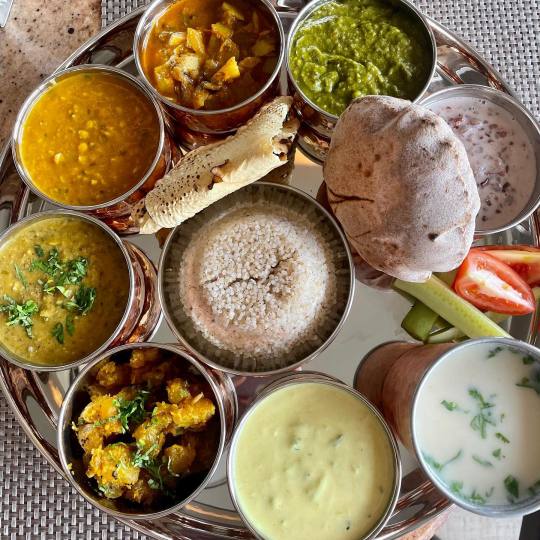
Our bodies thrive on the nutrients we consume, shaping our vitality and resilience against illnesses and inflammation. A wholesome diet not only energizes us throughout the day but also fuels growth, repairs, and fortifies our strength. The key lies in a balanced diet, easily digestible and brimming with life force—Prana. Discover the richness of our Garhwali Thali, meticulously crafted by our expert chefs, packed with goodness and superfoods to elevate your well-being.
Please visit: www.modiretreat.com
#yoga#food#wellness#ayurveda#indianfood#healthyfood#rishikeshdiaries#rishikesh#india#lifestyle#prana#vegetarian#sattvic#sattva#garhwali#uttarakhand
0 notes
Text
Planets in the Second House and Your Food Choices: What Astrology Says About Your Appetite
The second house in astrology isn't just about money, values, and possessions—it's the celestial kitchen of your chart. This house governs your mouth, taste, and what feeds your soul through food. When planets take residence here, they flavor your eating habits, cravings, and even how emotionally connected you are to food.
So, what does your cosmic recipe say about you?
Sun in the Second House: The Royal Eater
The Sun here craves food that feels grand. Think rich, traditional dishes, bold spices, and warm, golden flavors. People with this placement often have pride in their food choices maybe even a little snobbery. They gravitate toward cuisines that make them feel like royalty at the dinner table.
---
Moon in the Second House: The Comfort Craver
This is the emotional eater. With the Moon here, food is love, nostalgia, and therapy. These people lean into soft, creamy, home-cooked meals dishes like kheer, mashed potatoes, or milk-based desserts. They eat with their heart and often turn to food when moods fluctuate.
Mercury in the Second House: The Snack Connoisseur
Fast talkers, fast eaters. Mercury in this house loves light, crunchy, and quick foods sandwiches, wraps, finger foods. These people are curious about flavors and often enjoy experimenting or talking about what’s on their plate. Grazing > big meals.
---
Venus in the Second House: The Pleasure Seeker
Food is an art form to Venus in the second house. Presentation matters. Taste matters. Texture matters. These individuals gravitate toward luxurious, sweet, and beautifully plated meals. Expect an obsession with desserts, wine, and all things decadent.
Mars in the Second House: The Spice Fiend
Aggressive, intense, and never shy about flavour. Mars brings the fire spicy, meaty, bold dishes that dominate their menu. Think grilled meats, hot curries, and anything that kicks hard. Mars natives often eat fast and with purpose, sometimes even competitively.
Jupiter in the Second House: The Indulgent Explorer
When Jupiter sits here, there’s a love for abundance and variety. This placement leads to a deep appreciation for different cuisines big platters, feasts, and buffets. While their appetite for food is expansive, so is their waistline if they don’t watch that indulgence.
Saturn in the Second House: The Restrained Realist
Minimalist and disciplined, Saturn here creates a reserved palate. These individuals prefer simple, traditional, sometimes even bland food. Eating can be mechanical or health-conscious, and they may follow strict dietary routines or fast out of discipline.
Rahu in the Second House: The Obsessive Adventurer
Rahu is intense, unconventional, and often addicted to extremes. This placement loves foreign, exotic, or synthetic foods. Think instant noodles, processed snacks, and fusion experiments. There’s often a tendency toward bingeing or an over-dependence on specific tastes.
Ketu in the Second House: The Detached Diner
Ketu is all about withdrawal. Here, it can lead to irregular eating, disinterest in food, or spiritual dietary habits. These natives may fast frequently or forget to eat altogether. When they do eat, it’s minimalistic, clean, or sattvic more for function than pleasure.
#astrology#vedic astro observations#vedic astrology#astro community#astro observations#vedic chart#astro notes#astrology tumblr
172 notes
·
View notes
Text
BASICS OF ASTROLOGY + FINDING THE DOMINANT PLANET

(APPLICABLE TO VEDIC CHARTS ONLY / APPLY AT WESTERN CHART AT YOUR OWN ACCORD, I DO NOT GUARANTEE ACCURATE RESUTLS)
in vedic astrology, we consider the traditional planets—sun, moon, mercury, venus, mars, jupiter and saturn along with the nodes—north and south node to be the significant placements of a chart. we do not consider the outer planets, i.e. neptune, uranus and pluto as significant placements in a person's chart. this is because these are generational planets that remain in the same position for almost a human's entire life and do not influence a person's personality in any major way because generations of people are going to have the same particular placement.
following are a few important points about the planets you will need to properly analyze your vedic chart:
THE SUN / SURYA is your driving force, your life, your soul. it represents your ego. just as no life can exist on earth without the sun, no human can survive without an ego. even saints are driven towards moksha, or liberation. with a weak sun, a person will struggle with having a proper identity and will be unable to distinguish reality from illusions.
the sun is a 'sattvic'/ pure planet. in elements, it is fire. in gods, he is ravi / surya / the sun god & agni / the god of fire. in the zodiac, it is leo. in society, it is the king / ruler / president. in colors, it is red. in gems, it is ruby. in metals, it is copper. in the days, it is sunday / 'ravivaar'. in the body, it is bones ( particularly the spine ), the heart, stomach and the right eye. in items, it is saffron. in chants, it is HREEM.
your father represents your sun. bad relationship with father = bad sun, and vice versa.
the sun is sensitive to malefic planets, although it is generally susceptible to energies, as well.
the presence of rahu / ketu will irrevocably damage the sun. it forms an eclipse, leaving negative impact on the natives life and personality.
the house which your sun rules will be a house with a strong impact on your life purpose, regardless of other factors.
strong sun in good dignity = good eyesight, pleasant demeanour, good confidence, attractive aura, authoritative qualities, able to take a stand, comfortable in solitude.
strong sun in bad dignity = overconfidence, stubbornness, disregard towards other people, dictator like behavior, weak heart.
weak sun = weak eyes / higher susceptibility to eye problems, low confidence, lack of strong opinions, damaged relationship with father, lack of groundedness in reality.
THE MOON / SOMA / CHANDRA is your mind. quite literally. our brain is protected by cerebrospinal fluids and all fluids are under the domain of the moon, hence directly affecting your brain. the moon is the most important planet in the vedic chart. this is because so long as we are human, we are driven by our mind. although the soul (the sun) is the ultimate truth, as flesh and blood we cannot connect with our soul. our mind is what drives us in the mortal realm; the soul takes the backseat. the moon sign / nakshatra depending upon context, just as the sun in tropical astrology, is going to be what we're referring to when mentioning 'rashi' / sign.
the moon is a 'sattvic'/ pure planet and sits in the company of the sun, mars and jupiter. in elements, it is water. in gods, he is soma / chandra / the moon god. in the zodiac, it is cancer. in society, it is the queen / healer ( not alleopathic medical practicers or surgeons. only ayurveda practicers / psychiatrists / therapists). in colors, it is white and pale blue. in gems, it is pearl. in metals, it is silver. in the days, it is monday / 'somvaar'. in the body, it is the brain, fluid matter, and the womb. in items, it is food / nourishment. in chants, it is SHREEM.
your mother represents your sun. bad relationship with mother = bad moon, and vice versa.
it is noteworthy to mention that the correlation here is the strongest of all other planetary associations. if you hurt your mother, neglect her, disrespect her or abandon her, no matter however might her behavior towards you be, your moon will be completely destroyed. even if you have a bad relationship with father you can still fix your sun, but there's no way you can fix your moon if you have a bad relationship with your mother.
the moon is sensitive to malefic planets, although it is generally susceptible to energies, as well.
the presence of rahu / ketu will irrevocably damage the moon. it forms an eclipse, leaving negative impact on the natives life and personality.
aspects to / from / with the moon are case specific and i will not generalize anything. although, in general -
weak moon = mood swings, emotional turbulence, mental problems, weak aura, lack of appeal.
strong moon = good focus, strongly opinionated, has mother's support, will have more traits from their mother's ancestral house.
MERCURY / BUDDHA is your intelligence, your speech, your mental capacity. note that where the moon rules over mental stability and the physical brain tself, mercury rules purely over your intelligence, the abstract part of the brain. mercury represents how well you can think, your grasping power. mercury also affects your beauty & fashion style, although in a more indirect way unlike like moon which is quite literally your beauty or venus which represents the external manifestation of one's inner self. in mythology, buddha is the son of chandra & tara (jupiter's wife)
mercury is a 'rajasic'/ royal planet and sits in the company of venus and saturn. in elements, it is air. in gods, he is buddha / lord ganesha. in the zodiac, it is gemini & virgo. in nakshatras, it rules ashlesha, jyeshtha and revati. in society, it is the advisor / minister / doctor ( not surgeons ) / young girls. in colors, it is green. in gems, it is emerald. in metals, it is bronze. in the days, it is wednesday / 'budhvaar'. in the body, it is the nervous system, skin, face, and thyroid. in items, it is the pen.
your sister & maternal uncle represent your mercury. bad relationship with sister & uncle = bad mercury and vice versa.
the house which your mercury sits in will dictate the way your mind thinks.
mercury is friends with venus, saturn, sun and rahu. it is neutral towards ketu, mars and jupiter. it is enemies with the moon.
weak mercury = bad body coordination, may have problems walking in a straight line or just bad hand eye coordination. speech problems, may be too hasty, too slow or stutter. unattractive physique if supported by a weak moon and venus. inability to make use of even the most precious things even when the native owns them, a weak mercury is a weak mind.
strong mercury = wide forehead (usually), fond of laughter, may like sweet meats, good at thinking and have a good approach towards analyzing situations.
VENUS / SHUKRA is your beauty, your desires, your external appearance, what pleases you and for a man, what kind of woman best brings you peace and success. in mythology, shukra is the guru / teacher of the demons and hence, a weak venus is a weak moral compass. for men, a weak venus if supported by the appropriate aspects from planets, may make you infertile.
venus is a 'राजस्व' / royal planet and sits in the company of the mercury and saturn. in elements, it is water. in gods, he is shukra / goddess laxmi. in the zodiac, it is taurus & pisces. in society, it is women / younger animals. in colors, it is white and pale pink. in gems, it is diamond. in metals, it is platinum. in the days, it is friday / 'shukravaar'. in the body, it is the reproductive system, lumbar region, veins, parathyroids, throat, kidneys, face, and cheeks. in items, it is money.
your wife / girlfriend / lover / significant women other than the mother represents your venus. bad relationship / mistreatment of wife / women = bad venus, and vice versa.
venus, just like mercury, is best at mixing energies with another planet. very rarely will it give negative results, even when sitting with rahu or ketu.
it is very important for men to respect the women in their life because women represent venus, and for men, venus not only controls your success and fame, but also your ability to reproduce. shukra controls the 'शुक्राणु' / the sperm. expanding on this topic i would also like to mention that people who masturbate a lot weaken their venus because orgasming is a form of releasing sacred pent up energy. this is why people who masturbate a lot have sunken eyes and are physically weaker.
additionally, i would like to mention that in vedic culture, it is advised not to sleep the first time with anyone randomly. the first person who makes you orgasm should be the wedded husband / wife. otherwise, the first orgasm is considered 'wasted'. ( don't come after my ass, do whatever you want i'm just giving information)
for women, it is highly advised to wear floral perfumes and engage in self care to strengthen your venus. venus also represents the bedroom, that's why it is considered a sacred place which should be accessible only to the husband and wife. the wife is the caretaker of this domain, and at the very least should engage in habits that keep the bedroom neat and clean. ( i do not mean to say that the wife should cook and clean or imposing any sexist roles on anyone. regardless, some things are a responsibility and should be done by a specific person. very crude indeed, but i would like to give an example- you won't have servants bathe you just because you're an independent woman, will you? it's like that. i'm not putting anyone at gunpoint here, you're your own master; nor am i supporting sexist gender roles. )
for unmarried women too, it is recommended to spray the bedroom with floral scents and wear white clothes and / or floral designs in clothes, jewelry or flowers themselves in their hair. although the last part isn't very practical. unmarried women should avoid criticizing other women or speaking ill of other's appearance. ( do avoid wearing scents at night though, it attracts negative spirits)
among all planets, venus is the most strongly affected by our day to day actions.
strong venus = good regulation of sexual energy, curvaceous bountiful body for women, healthy reproductive system in men, good hygiene, soft and polite speech, abundance of opportunities.
weak venus = harsh speech, lack of hygiene, disgraceful behavior, weak immune system.
MARS / MANGAL / KUJA is your courage, your energy, your drive, determination, passion and hope. when a human being is born, first the brain starts working, and then the intelligence develops. it is when we become fully conscious of ourselves and our surroundings that we develop a sense of passion and drive, all while the soul keeps watching the 'show' from behind the 'curtain'. mars is what gives life meaning. mars has direct correlation with the moon, because even violence stems from deep emotional turbulence. i have noticed that people with a strong moon but weak mars express even positive emotions very strongly. a weak mars will hinder how you interact with the world. where sun is the will, mars shows the way. sun gives rise to your purpose, and mars gives rise to desire. those two may or may not be the same, but without passion, life has no meaning whatsoever.
mars is a 'सात्त्विक' / pure planet and sits in the company of the sun, moon and jupiter. in elements, it is fire. in gods, he is mangal / lord hanuman. in the zodiac, it is aries and scorpio. in society, it is the soldier / surgeon. in colors, it is red. in gems, it is red coral. in metals, it is bronze. in the days, it is tuesday / 'मंगलवार'. in the body, it is the blood, muscles, bile, hands, genitals, rectum, adrenal, hemoglobin, prostrate gland and adrenaline. in items, it is the knife.
your brother & other prominent men in your life represent your mars. bad relationship with brother or these men = bad mars, and vice versa.
mars can be best managed by doing physical activities. dancing, sports, going for a walk are all activities that will recharge your mars.
weak mars = anger issues, violent behaviour / inclination towards violence or fear of fights / violence. bad expression of self. isses standing up for oneself, body will find it difficult to store and retain energy.
strong mars = bold, fiery and passionate. stubbornness and able to take a stand. will avoid figts until absolutely demanded. courageous but retains their wisdom even in anger. good regulation of excess energy or good at storing energy.
JUPITER / GURU is your knowledge, your moral compass, your 'luck' and your teacher. in terms of luck, jupiter is the planet to go to. thing is that although jupiter itself will not particularly affect the smaller niches of your personality like the sun, moon or asc will, but it will guide you throughout your life. in vedic mythology, jupiter is lord vishnu 'अनंत', 'सत्यानंद' , 'सत्यनारायण'. he is the supreme divine, the origin of life and the preserver of all that exists. he is endless, the only truth, and the guide of all. hence why in the vedic chart, a weak jupiter is considered extremely unfavourable regardless of other factors.
jupiter is a 'सात्त्विक' / pure planet and sits in the company of the sun, moon and mars. in elements, it is air. in gods, he is guru / lord vishnu. in the zodiac, it is sagittarius and pisces. in society, it is the teacher. in colors, it is yellow. in gems, it is yellow sapphire. in metals, it is gold. in the days, it is thursday / 'गुरुवार' . in the body, it is the liver, kidneys, and pancreas. in items, it is the book.
your teacher represents your jupiter. bad relationship with / disrespecting / troubling / viewing the teacher inappropriately = bad jupiter, and vice versa.
for women, jupiter represents the husband. although jupiter should hold more value to women just as a good venus does for men, i recommend strengthening your jupiter for both men and women. a bad jupiter will literally hinder all your success.
jupiter is a heavy planet and damages the house it is sitting in.
jupiter observes, and moulds the path forward based on what you do in the present. jupiter and saturn are the two planets that will never let your past deeds go in vain / be forgotten. the native will get what is due, in accordance with the houses or signs these planets are ruled by.
SATURN / SHANI is your struggles, the punishments you receive for bad karma, your hard work and your restrictions. most people relate saturn with past life karma, and that is only partially true. swyurn is the punishment you're receiving for your past life karma, but if you want to delve into your past .ife itself, then we majorly speak of rahu and ketu, in association with saturn and the ascendant.
maids, sweepers, poor people, disabled people represent your saturn. bad relationship / disrespecting them = bad saturn, and vice versa.
saturn will delay but never deny; it only gives you what you want when you come to terms with why you want it or why the universe should give it to you.
in vedic astrology, we associate to planets with bestowing riches; satrn and rahu. the thing with saturn is that it demands you to become someone who is worthy of receiving what you desire, and that is often a slow process so people dislike this planet. but without your saturn, you will never be able to achieve heights of character and nobility.
capricorn and aquarius are ruled by saturn.
i won't comment on how wek and strong saturn manifests since it's a bit tricky. but if you're certain you're facing problems due to saturn, then you may do the following remedies-
donate alms to beggars, offer food to dogs, respect and care for maids and sweepers, never criticize the difficulties of life. if you're a hindu, praying to lord shiva or lrd narasimha is greatly recommended. during the sadesati period, make it a point to chant the narasimha kavacham / hanuman chalisa for your physical safety.
you can learn about sadesati here.
RAHU is your greed, unjustified curiousity and the things you never managed to know or experience in your past life. although it is fairly antagonised, it is as much representative of your soul as your ketu. as they say, light does not exist without the dark. regardless, rahu is your greed and understanding it is key to understanding your shadow side. what your rahu desires is what you intrinsically are motivated by, whether or not you realise it. it is body less, and craves endlessly. a common remedy to reduce negative affects of rahu is to wear a silver chain around the neck; because rahu is without body and is kept at bay by silver.
rahu represents your paternal ancestors. disrespecting them weakens the rahu.
rahu represents the things you are irresistibly drawn to or have an almost insatiable affinity towards. these are things you didn't focus on in your previous lives, and so to balance the scales, you must now delve into those aspects of life, as well.
what is noteworthy about this though, is to remember than too much of everything is bad. delving too much into the themes of rahu is actually destructive, and this is the part of rahu that most people highlight. it's simply that balance is necessary, and without exploring what your soul desires, you won't be able to sit in peace.
the most important thing here is discipline, though. at the end of the day rahu is a shadow planet that feeds off your satvik gunas (positive qualities).
like i mentioned in saturn; rahu is also one of those planets that bestow massive wealth. businessmen / women often do rituals / remedies to reap the benefits of rahu.
KETU is your past life's karma (mine seems pretty bad since i have written this thing five times now and coincidentally it never displays😶) and your ancestry. it is the things you inherited from your ancestors and also who you were in your past life. ketu is the pathway to understanding one's spiritual nature. ketu is a headless planet. in it's mahadasha or antardasha, natives may find themselves doing things or making decisions they normally wouldn't because they are disillusioned by falsities.
ketu represents our maternal ancestors. speaking ill of them ruins our ketu.
ketu is the body of the demon svarbhanu, (you may read about the mythology behind rahu & ketu in vedic culture here; amazing article btw) and wields a sword in his hands; this sword is symbolic of ketu's importance in our lives. he is the force that cuts out attachments and punishes us for our bad deeds in our previous lives. this is why the punishments bestowed by ketu are difficult to understand.
truth be told, it is best to lower our heads and accept his punishments. this is one of the planet's on whom no remedy works. he aspires not only for you to rise from the mud, but also aims at helping you bloom into a lotus. he will break you, but just as a forest blooms after a fire, we too, must burn ourselves in the trials of life to become our best selves.
ketu also create illusions and causes dissatisfaction wherever it sits. this is unlike the nature of rahu which desires more of wherever it is sitting; ketu causes you to completely turn away from said thing. ketu is the outcast. it's energy is like a snake's; dangerous, but attractive nonetheless.
ketu dominant people, or people having ketu conjunct sun or moon within 10° are highly magnetic. they tend to devour other's energy. of course, it can manifest positively as well; but majorly these people create a lot of polarity wherever they go, attracting people to themselves with ease.
this also means that they are prone to the black eye. ketu dominant people try to be rational, but it's easy for them to get carried away. they should keep at least one well-wisher around themselves whom they can trust with their body and soul.
in your ketu md, or ad, make sure not to gamble with money, resources or people too much. this will be a time of less, regardless of how good ketu might be in your chart. and if it's weak, then it will cause intense emotional turmoil, depression, and in worst cases, even drive someone to insanity or suicide (debilitated moon with strong mars in low dignity supported with a weak sun)
no remedy exists for ketu. you can only pray to your god to protect your physical health and your soul and give you the strength to overcome difficulties. remember that ketu aims not to break you, but to teach you, and if you resist too much, then it will break you.
helpful resources (verified) you need not overwhelm yourself with information, it's just for help and you end up learning it along the way; no need to try to memorise it.
understanding mahadasha and antardasha.
reading the south indian, and north indian vedic chart, respectively. below it, basic info about the planets. note that, ketu is represented by the colour brown and rahu by deep blue as opposed to 'colourless'.


the significance of the houses, and their respective planets.

break down of the four main motivations of human life as depicted in vedic chart.

the aspects of the planets in vedic astrology. note that all planets have a default aspect of conjunction, which maximum works till 15°. also known as the 'drishti' / sight of planets.
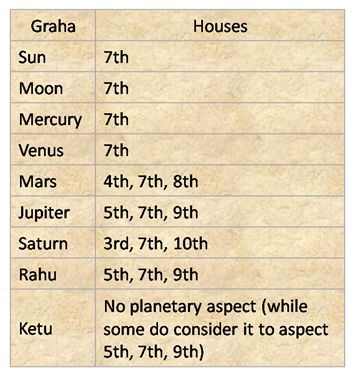
the planets and the houses wherein they are strong / weak.

the various charts studied id vedic astrology. we majorly discuss D1 and D9 charts.
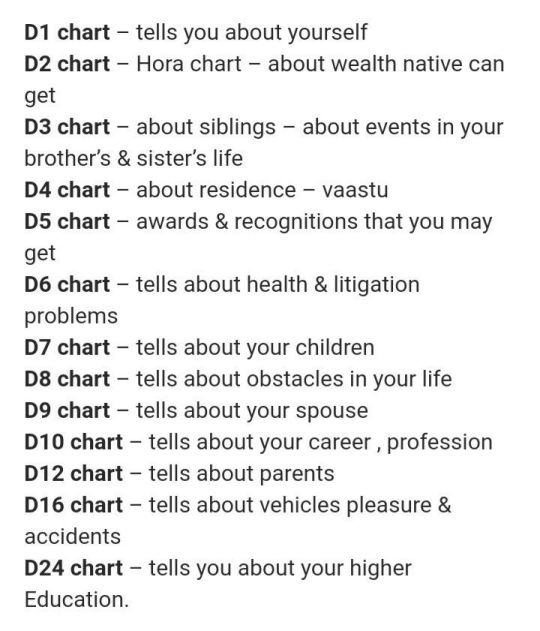
importance of the houses in D9 chart.

the 12 zodiac signs.
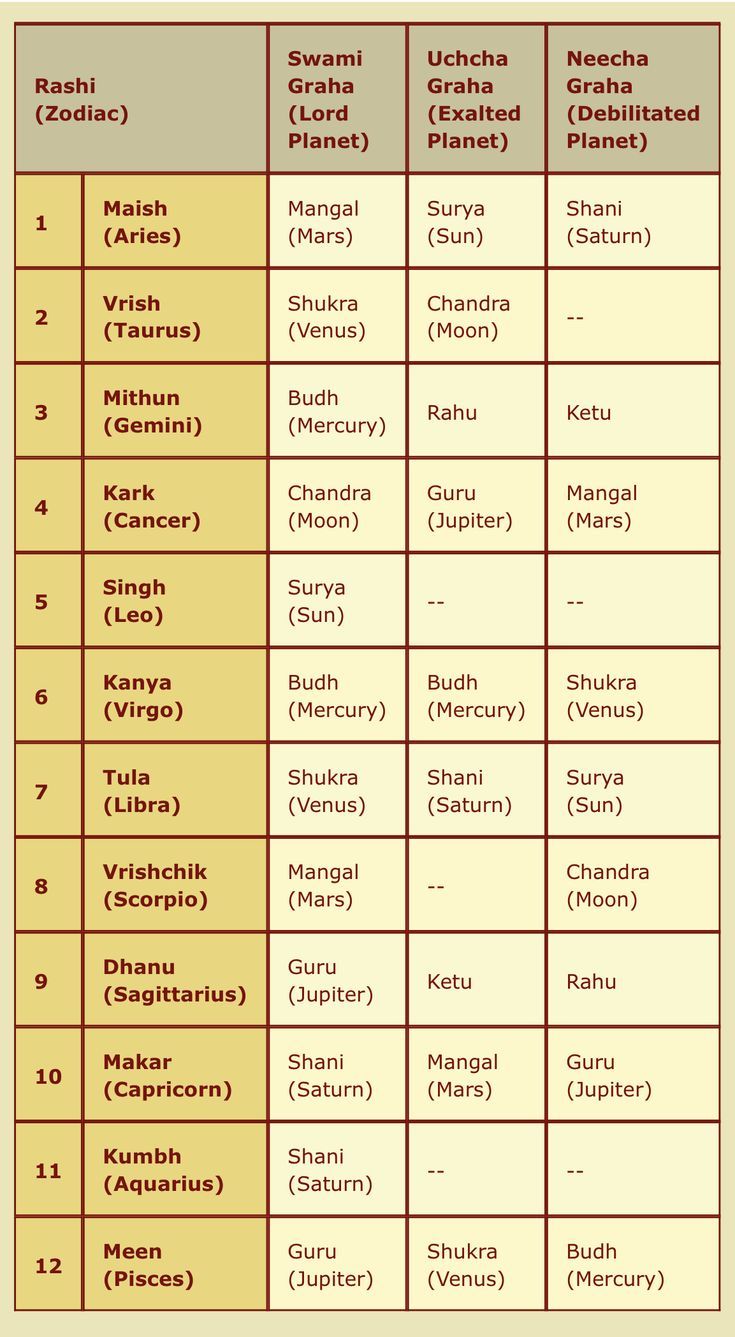
the 27 nakshatras (lunar mansions).
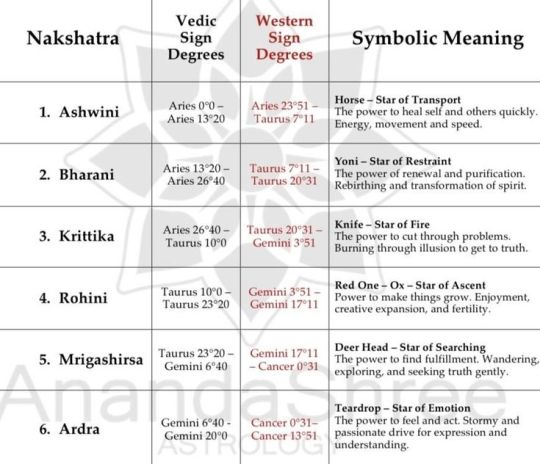

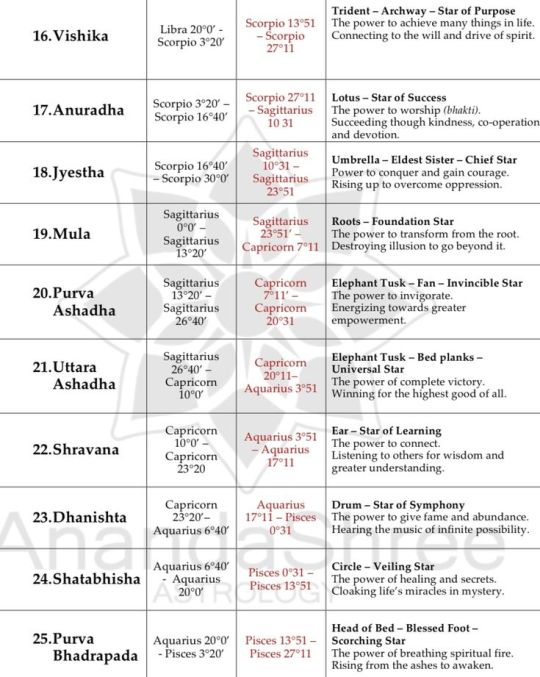

FINDING THE DOMINANT PLANET
DISCLAIMER : THE METHOD I HAVE USED BELOW IS SIMPLY BASED OFF GENERAL TRENDS AND IS NOT ANY CONVENTIONAL METHOD. I ALLOW ITS USE ON GROUNDS THAT INACCURACIES ARE NOT TO BE HELD AGAINST ME.
use the following trick for finding your dominant planet; the planet with the highest score is your dominant planet.
moon nakshatra lord [ +15 ]
moon sign lord [ +8 ]
asc nakshatra lord [ +10 ]
asc sign lord [ +10 ]
sun nakshatra lord [ +3 ]
sun sign lord [ +3 ]
planets in first house closely conjunct asc ( 10 degree max. ) [ +8 ]
planets in first house loosely conjunct asc ( any degree further than 10) [ +4 ]
planets in stellium conjunct moon [ +5 ]
planets in stellium conjunct sun [ +2 ]
in case it so happens that two planets are having the same score-
recheck your calculations
choose the planet of your moon sign lord / nakshatra lord out of the two
if none of these tips help and you're certainly not an idiot then you're welcome to send me your chart to help you determine your dominant planet. only send your vedic chart + nakshatras. i will not analyse anything else in the chart, though.

JAIMINI ASTROLOGY
i am not learnt in jaimini astrology and only understand understand the few basics which i might mention from time to time, so you may refer to this website to understand what atmakaraka and amatyakaraka are

CLOSING WORD : consider this to be the guidebook of all vedic astrology content that ill post on my blog. if there is any doubt, then please first refer to this post for information, and if you still don't find an answer to your question, then you're welcome to send it to me via ask. do remember that i will exercise freedom in which asks i shall answer and which ones i won't based on how precise the question you're asking is since i don't do personal readings.
#astrocartography#astrology observations#ashlesha#vedic astrology#astro observations#astrology#astro notes#astro tumblr#astro placements#astrology notes#astro community#astrology community#astrology blog
276 notes
·
View notes
Text
Astro Remediation: Skin Conditions
Ever wonder if you can identify which aspects and placements in your natal chart can indicate skin conditions? Well, in Vedic Astrology, I can do this for you as well as customize a remediation plan for your personal road to recovery.
This is based on Ancient Astrology and Auyrvedic Healing. I struggled with acne as well as back acne for most of my good years. Nothing ever worked but then I tried the Eastern Medicine approach and implemented my knowledge of Astrology to help create a regimine for myself. It's truly magical what Astrology can reveal to us and even remedy for us. Everything can be alchemized as long as you have the tools and knowledge in front of you.
So, message me if you're interested in a consult and Remediation plan, personalized for you!


In Vedic astrology, skin conditions can be assessed by analyzing various placements, signs, and aspects in a natal chart. The primary houses and planets to consider are the 1st house (self, physical body), 6th house (health, diseases), and the ascendant (physical appearance, constitution). The Moon, Mars, and Saturn are also important planets to consider when evaluating skin health.
Here are some possible aspects and placements that may indicate skin conditions, along with potential remediation measures:
Facial acne, cystic acne, back acne, and body acne:
Mars or Saturn in the 1st house or 6th house, especially in water signs (Cancer, Scorpio, Pisces)
Moon afflicted by Mars or Saturn, particularly in the 1st, 6th, or 8th house
Ascendant or 6th house lord afflicted by Mars or Saturn
Rahu or Ketu in the 1st or 6th house
Remediation:
Wear a red coral or bloodstone gemstone to pacify Mars
Chant the Gayatri mantra or the Maha Mrityunjaya mantra for spiritual healing
Practice stress-reducing techniques like meditation, yoga, or pranayama
Maintain a clean, healthy diet and avoid oily, spicy, or processed foods


Psoriasis and other autoimmune skin disorders:
Moon afflicted by Saturn, Rahu, or Ketu, particularly in the 1st, 6th, or 8th house
Saturn in the 1st house or 6th house, especially in fire signs (Aries, Leo, Sagittarius)
6th house lord in the 8th house or 8th house lord in the 6th house
Weak or afflicted Sun in the chart
Remediation:
Wear a moonstone or pearl to strengthen the Moon
Chant the Mahamrityunjaya mantra or the Surya mantra for healing
Practice stress-reducing techniques and maintain a regular sleep schedule
Follow a sattvic diet rich in fruits, vegetables, and whole grains
Eczema and other inflammatory skin conditions:
Pitta (fire) dominant constitution, with a strong presence of Mars, Sun, or Ketu in the chart
Mars or Ketu in the 1st house or 6th house, especially in fire signs
Ascendant or 6th house lord afflicted by Mars or Ketu
Moon afflicted by Mars or Sun, particularly in the 1st, 6th, or 8th house
Remediation:
Wear a moonstone or pearl to balance the Moon and reduce Pitta
Chant the Shiva mantra or the Durga mantra for spiritual healing
Practice cooling pranayama techniques like Sheetali or Sheetkari
Follow a Pitta-pacifying diet, avoiding spicy, sour, and fermented foods


Fungal skin infections:
Kapha (water and earth) dominant constitution, with a strong presence of Moon, Venus, or Jupiter in the chart
Moon or Venus in the 1st house or 6th house, especially in water or earth signs
Ascendant or 6th house lord afflicted by Moon or Venus
Weak or afflicted Mars in the chart
Remediation:
Wear a red coral or bloodstone to strengthen Mars and reduce Kapha
Chant the Hanuman Chalisa or the Durga mantra for spiritual healing
Practice invigorating pranayama techniques like Bhastrika or Kapalbhati
Follow a Kapha-pacifying diet, avoiding cold, heavy, and oily foods
It's important to note that these are general guidelines. I will not be revealing every remediation or chart indication in this post as there are a lot more nuances that go into harsher conditions, such as ones developed due to issues such as auto immune diseases. Additionally, while astrological remedies can be helpful, it is always advisable to consult with a qualified healthcare professional for proper diagnosis and treatment of any skin condition.
#astrology#zodiac#natal chart#sagittarius#astro notes#libra#capricorn#astro observations#virgo#vedic astro observations#vedic astrology#vedic astro notes#vedic chart#vedicwisdom#bhajan#kirtan#darshan#srila prabhupada#skincare#skincare tips
399 notes
·
View notes
Text
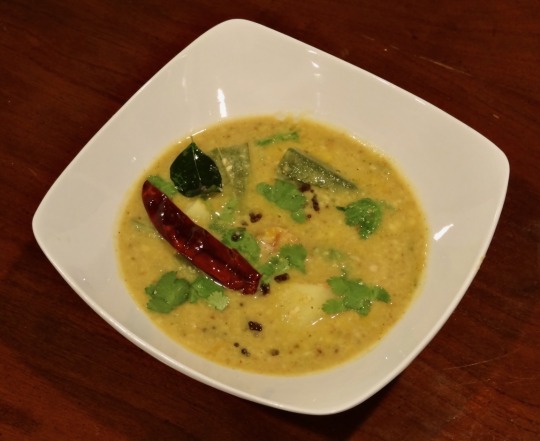
[ID: A bowl of a bright yellow stew topped with cilantro, mustard seed, chili, and curry leaf. End ID]
ಉಡುಪಿ ಸಾಂಬಾರ್ / Udupi sambar
A sambar is a lentil-and-vegetable stew distinguished by the use of a particular spice blend (Hindi: सांबर मसाला "sāmbār masālā," "sambar spice"; Kannada: ಸಾಂಬಾರ್ ಪುಡಿ "sāmbār puḍi," "sambar powder"). Sambars are a staple of South Indian and Sri Lankan cooking, sometimes made in households for multiple meals a week. The word "sambar" can be traced back to the Sanskrit सम्भार "sambhārá," "collection of things required for a particular purpose”; “spices."
The lentil used in sambar dishes is usually tur dal (split pigeon peas), though arhar dal, tuvur dal, or even blends containing masur or mung dal may be used, depending on the cook or the region. Vegetables also vary between combinations of okra, potato, ash gourd (petha), bottle gourd (doodhi / lauki), drumstick (saijan ki phalli), beetroot, tomato, carrot, pumpkin, brinjal, and pearl onions, among others. The sambar masala fries chilis, curry leaves, dal, and various spices including cumin, coriander, and fenugreek, then grinds them into a spicy, earthy, fragrant blend.
This recipe makes a sambar in the style of ಉಡುಪಿ (Udupi) cuisine—a subdivision of the cuisine of the ತುಳುವ (Tuluva) people localised in the Udupi District of Karnataka, a southeastern coastal state of India. (Tuluva cuisine is also commonly found in Dakshina Kannada, Karnataka, and Kasaragod, Kerala). In the Udupi region, sambar may be known as "ಕೊಡೆಲ್" "kodhel"; perhaps related to "ಕಡಲೆ" "kadhale" "Bengal gram"; or "ಹುಲಿ" "huḷi"; "tartness." Udupi huli has coconut oil and jaggery as its primary distinguishing features: the jaggery's deep sweetness and the earthy pungency of unrefined coconut oil combine with the spice of the chilis and the sour fruitiness of the tamarind to create a complex, flavorful, well-balanced dish.
Udupi huli may be further divided into a few major types. ಮಸಾಲೆ ಹುಳಿ ("masāla huḷi") contains shredded coconut and vegetables; ಬೋಳು ಹುಳಿ ("bolu huḷi") contains vegetables, but omits the coconut.
Hotel-style masala huli recipes typically add a lot of jaggery to produce a distinct sweetness; cut back on the amount of coconut included; and contain onion and garlic. The other main type of masala huli—“temple style”—is sattvic (from Sanskrit "सत्त्व" "sattva": "goodness," "essence," "existence"), which in this context means that onions and garlic are excluded.
A sattvic diet in Hinduism centres around the concept of maintaining sattva by eating only pure and mild (sattvic) foods, and omitting tamasic (“dark,” "inert," "destructive"; from Sanskrit तमस् "tamas") and rajasic ("exciting," "passionate," from Sanskrit रजस् "rajas") ones. The concepts of sattva, tamas, and rajas (the गुण "guṇa" system) are central to the construction of caste: the degree to which each person innately inherits each quality supposedly determines their possession of characteristics including honesty, intelligence, and goodness (sattva), stupidity and lack of creativity (tamas), and passion and pridefulness (rajas); the possession of these characteristics in turn determines their rightful place in a professional and social hierarchy. The association of certain foods with certain qualities thus links diet to caste: a distinction in diet is one of the methods by which those belonging to upper castes maintain and police caste boundaries.
This recipe makes enough pudi for one pot of sambar. Traditionally, sambar pudi is created fresh each time the dish is made, but many households make large batches and store them. In this case, omit the coconut; or, use dried coconut and store the masala in the refrigerator.
Recipe under the cut!
Patreon | Paypal | Venmo
Ingredients:
Serves 4-6.
For the sambar:
2 cups chopped vegetables
1 red onion, sliced*
1 cup (200g) yellow split pigeon peas / tur dal / ತೂರ್ ದಾಲ್ (ಹಳದಿ ಸ್ಪ್ಲಿಟ್ ಪಾರಿವಾಳದ ಬಟಾಣಿ)
4 cups (1 litre) water, or as needed
1/4 tsp ground turmeric / haldi / ಅರಿಶಿನ
2 tsp table salt
2 tsp jaggery / gur / ಬೆಲ್ಲ*
1/4 cup (60mL) tamarind pulp (from 1 Tbsp dried tamarind / imlie / ಹುಣಸೆಹಣ್ಣು)
2 tsp unrefined coconut oil / nariyal ka tel / ತೆಂಗಿನ ಎಣ್ಣೆ
Ingredient list format is English / Hindi (Latin transcription) / Kannada. The Hindi is provided for convenience while shopping.
Udupi sambar usually uses any of: gourd, brinjal (Indian eggplant), pumpkin, dumstick (saijan ki phalli), and okra. Pearl onion is not usually used in this region, but you can add whatever you want, according to taste.
*For a hotel-style sambar, include the onion; increase the jaggery to 2 Tbsp.
For the spice paste / sambar masala / ಸಾಂಬಾರ್ ಪುಡಿ ("sambar pudi"):
1/2 Tbsp split Bengal gram / chana dal / ಹಳದಿ ಸ್ಪ್ಲಿಟ್ ಗ್ರಾಂ
2 tsp split black gram / urad dal chilka / ಸ್ಪ್ಲಿಟ್ ಬ್ಲ್ಯಾಕ್ ಗ್ರಾಂ
2 tsp coriander seeds / dhaniya / ಕೊತ್ತಂಬರಿ ಬೀಜದ
1/2 tsp fenugreek seeds / methi / ಮೆಂತ್ಯ
1 tsp cumin seeds / jeera / ಜೀರಿಗೆ
1 tsp ground turmeric
5-6 curry leaves / kari pati / ಕರಿಬೇವು
3-4 Byadagi or other dried red chilis / byadagi mirch / ಬ್ಯಾಡಗಿ ಮೆಣಸಿನಕಾಯಿ
4 cloves garlic, skins on*
Large pinch asafoetida / hing / ಇಂಗು
1 cup (100g) fresh coconut (about one coconut)*
1/2 cup (120mL) water
While the ratio of ingredients in Udupi sambar pudi vary slightly, the ingredients themselves are almost always consistent.
*For a hotel-style sambar, include the garlic, and decrease the coconut in the sambar masala to 1/4 or 1/2 cup (25-50g).
The grams and pulses in this pudi have many different names. You can find them in a halal or South Asian grocery store; look on the bag for the Hindi names (since they have been transcribed into Latin, the spelling may vary from what you see here).
The urad dal you find may be husked, and thus yellow instead of black; these will work just as well.
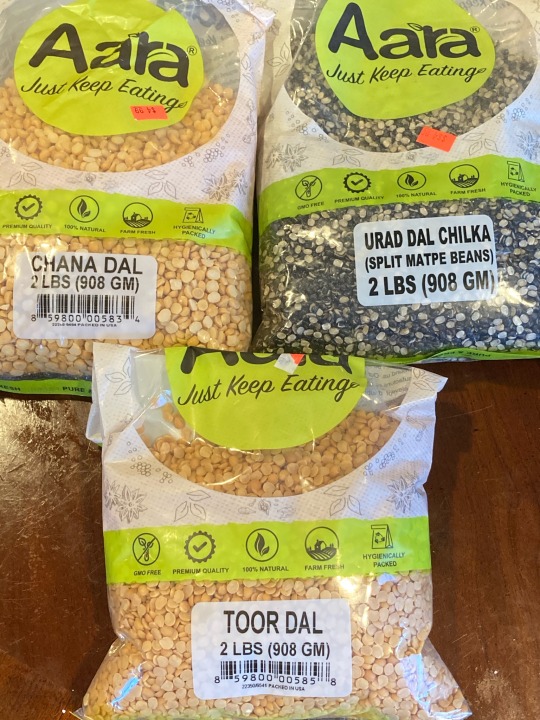
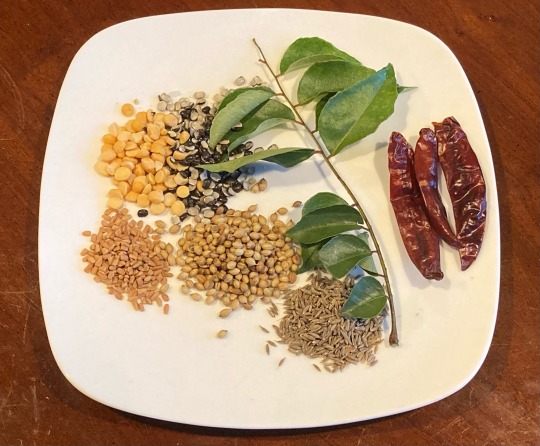
For the tempering / tadka / ಹದಗೊಳಿಸುವ:
2 Tbsp unrefined coconut oil
2 red chilis
8 curry leaves
1 tsp brown mustard seeds / rai / ಸಾಸಿವೆ ಬೀಜಗಳು
Recipes from north Karnataka may add cumin and whole, unpeeled garlic cloves to the tempering.
Instructions:
For the sambar pudi:
1. Break open the coconut and remove and shread its flesh.
If using a whole dried coconut, break into the shell with the wrong side of a hammer and pry open. Break into a few smaller pieces and peel with a vegetable peeler until the skin is removed from the white flesh, wearing something to protect your hand. Soak in warm water for several minutes to soften, and then grate or food process.
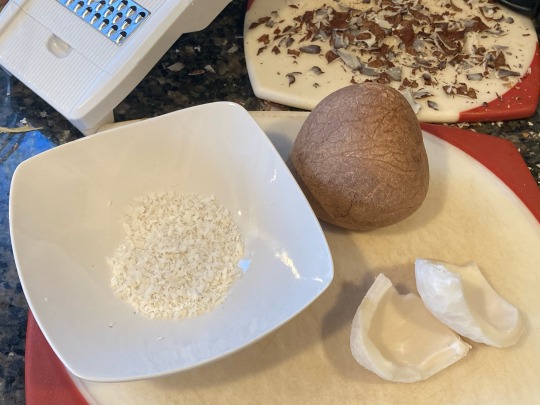
2. Heat 2 Tbsp of coconut oil in a skillet on medium-low. Add asafoetida and fry for 30 seconds, until no longer raw-smelling. Add dal and fry, stirring often, for 30 seconds until golden brown; add coriander, mustard, fenugreek, and cumin seeds and fry until fragrant.
3. Add curry leaves and fry until wilted, then add garlic and dried chilis and fry another 30 seconds to a minute, until fragrant.
4. Add coconut and fry, stirring often, for another few minutes until a shade darker. Add turmeric and stir.
5. Grind all ingredients into a paste in a mortar and pestle, then mix in about 1/2 cup water to loosen (if using dried coconut, you may need more water).
Or, put all ingredients along with 1/2 cup water into a blender or food processor and process until a relatively smooth paste forms.
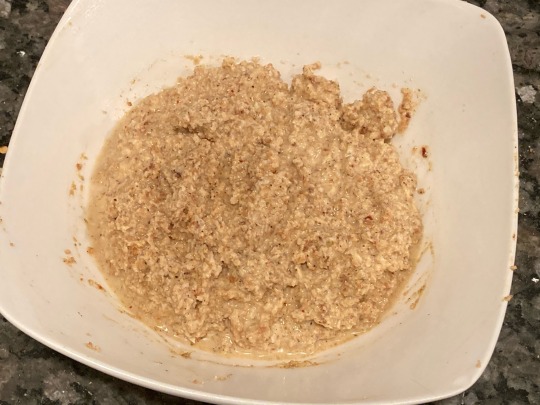
For the sambar:
1. Wash tur dal to remove excess starch. Simmer dal with 2 cups water, 1/4 tsp ground turmeric, and 1 tsp coconut oil for about 30 minutes until very tender. Mash until relatively smooth with a wooden spoon or bean masher, or process briefly with an immersion blender.
You may soak the dal in water after rinsing them to reduce the cooking time, but it is not necessary.
2. Meanwhile, make the tamarind paste. Soak 1 Tbsp tamarind dried pulp in 1/4 cup hot water for 20-30 minutes. Squeeze the tamarind into the water to extract the pulp. Discard the tamarind seeds and husk. Optionally, depending on your preferred texture, push the mixture through a metal sieve.
3. Prepare vegetables. Slice the onion; remove ends of okra and drumsticks and cut into 2-inch pieces; quarter tomatoes; quarter brinjal; peel pumpkin and cut into cubes; peel and cube potatoes.
4. If using onion, add a teaspoon of coconut oil to a large pot and fry until translucent.
5. In the same pot, boil vegetables in just enough water to cover, along with a pinch of salt, until they are beginning to soften.
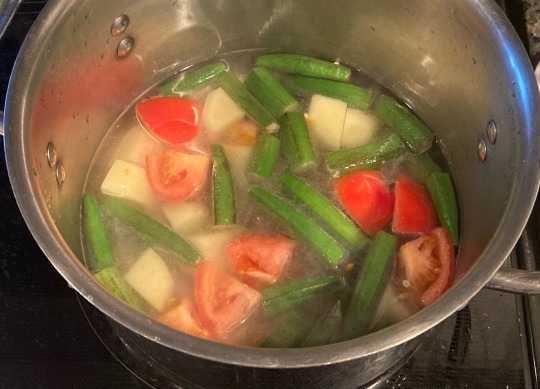
Some recipes call for the vegetables to be boiled, and others call for them to be steamed. I prefer boiling, since it produces a nice savory broth.
6. Mix vegetables, dal, tamarind, jaggery, sambar pudi, and salt to taste and simmer 5-10 minutes to allow flavors to combine and vegetables to cook under tender. Add water as needed. Remove from heat and stir in cilantro. Taste and adjust salt.
The final sambar should be pourable, like a thick soup—Karnataka sambar is typically thinner in consistency than Tamil Nadu versions.
For the tadka:
1. Heat coconut oil in a small skillet on medium heat. Add tempering ingredients and fry, stirring often, until chilis and curry leaves are a couple shades darker and the mixture is fragrant.
2. Pour the oil and tempering ingredients into the sambar and stir in. If you like, retain some of the tadka as a garnish to serve.
3. Serve warm, in individual bowls, alongside long-grain white rice. To eat drumsticks, scoop the center out and eat it; the tough outer rind is left.
If you intend to save some sambar, it's a good idea to make just enough tadka for what you plan to eat that day, and then make fresh tadka to pour over the reheated leftovers.
112 notes
·
View notes
Text
Ashlesha's symbol is a coiled snake. Representing the dormant Kundalini housed at the base of the spine.
When Kundalini awakens, she is pure unconditional love. But what happens before then?
The hypnotic, cat-like nature of Ashlesha is sensual and sexual. It gives someone an innate mastery over astral and sexual energy. This is why it can have the reputation for being manipulative and cold. I have noticed when I meet an Ashlesha dominant person they appear in my dreams.
When the Kundalini wakes up, she purges out all of your attachments, as seen in Purva Bhadrapada. While Purva Bhadrapada is the ability to manipulate with an awakened Shakti, totally removed emotionally, Ashlesha is the opposite. Ashlesha is housed in the comfort loving home of Cancer, and its yoni animal is the domestic cat.
It is also referred to as the "clinging star", and these people manipulate based on their attachments. Whether or not this ability beneficial only to them or to their loved ones is up to the individual horoscope. But the deities associated with this nakshatra are the decadent Naga serpents, with their love of jewels, gold, and fine sattvic food.
In pop culture, we can see this ability to draw things in using sexual energy in Ashlesha celebrities like Marilyn Monroe, Madonna, and Megan Fox. They often times get a demonized reputation for this, but this is the dark nature of Ashlesha. They are the ones who are most willing to undergo plastic surgeries and take up new personas, because of this cold Mercurial nature.
As a male example, Brian Jones from the Rolling Stones was not only a very technically proficient musician, but he also used this ability to draw an exuberant amount of lovers in.
Also, Jackson Galaxy, the My Cat From Hell guy has Ashlesha moon. And his whole career is based around being a "cat whisperer", and helping people to understand how to get their cats to behave. Again, very sensitive and skilled at manipulating energy, and with its yoni animal no less. He is a more positive example, I think.








49 notes
·
View notes
Text
REST OF 2023 : PICK A CARD

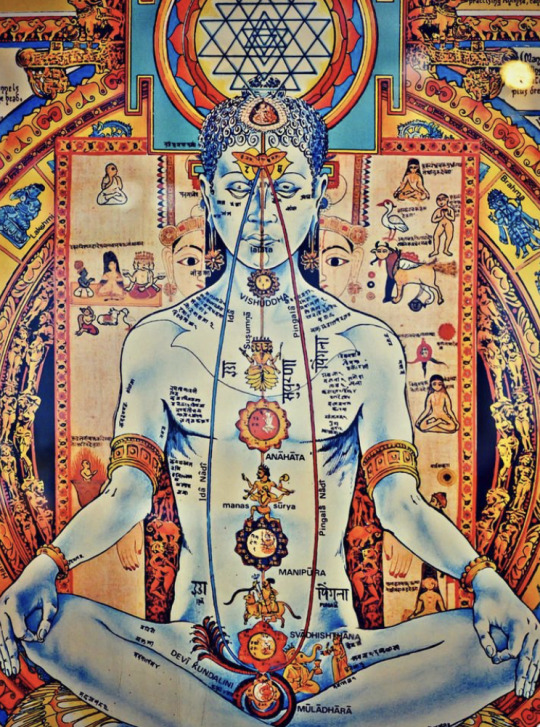
LEFT: 111 RIGHT: 333
Disclaimer:
This is a general reading take what resonates and leave the rest
No one is allowed to copy my work under any circumstances
DM for a personal tarot reading
All personal readings are paid.
🤍111🤍
Many of you need to forgive someone in your life, for your own sake, the resentment and holding on is hurting you by blocking future connections, connections that are good for you, so let go and forgive truly, and move on. Easier said than done, still something that must be done, you do not have to go back to the person, just forgive and move on. You are being told to be an alchemist, use your hurt and sorrow as a fuel to be creative, use your anger into being productive and making something out of yourself. Some of you are anxious, I feel Brahmi Pranayama would help greatly, shut off the world for a few minutes and let you be. Spend at least 15-20 minutes in silence. Once you truly are ready to move on to a better life, ask universe for its help, tell the universe, I want to realise my destiny, take me where need be, I am ready to let all this go, and step into my new life.
Start a new passion project that you have been holding on, instead of jumping in too quick and going viral, put in the work in making a solid foundation, you have been giving this blessing, do not waste it. Some of you will be starting your spiritual journey or undertaking sadhana, be grateful and thankful to have received this opportunity. Know that currently: You are the designer of your life, and the design is in control of the designer. GIVE IT SHAPE. You have everything you need to bring your desires into manifestation. Importantly: Put your resources into something that will give you emotional fulfilment.
Small Warnings: Stay away from greed and arrogance.
Comment ‘111’ to claim.
🌙 DM TO BOOK A TAROT READING 🌙
🤍333🤍
Read: stopping by the woods on a snowy evening by Robert Frost, and write down what you learned from the poem. This is my spiritual pile, who are in need of guidance, you are looking for a guru/mentor of sorts, and I am here to tell you that spirit is saying that one can learn something from anything, instead of looking for a mentor, learn from your surroundings, if you have the attitude of a student one can learn, but that attitude- attitude of learning is the rarest thing in the world. Simply put: mentors find you when you are ready, you are not ready. Learn from your surroundings, and internalise what you learned, instead of simply understanding it intellectually. Focus on one thing and one thing only, whatever that might be, focus on one lesson at a time. Reduce, Reuse: No impulsive shopping, find multiple uses for one item, try to be as resourceful as possible.
Eat better, more sattvic foods, this will be important in emotional stability, focus on what goes inside your body. The focus here could be on emotional stability, finding yourself, who you are, what your triggers are, understanding your own body better, mastering your emotions. Solid foundation is important here as well, baby steps go a long way, working on. Small triggers and emotional wounds of a long way, this is a life’s work not a season’s, this is just the beginning of your journey, do not take too many things at once or you will get overwhelmed. For some, take the help of a professional therapist.
Comment ‘333’ to claim.
🌙 DM TO BOOK A TAROT READING 🌙
-
EL TAROT
#pick a pile#pick an image#pick a picture#pac reading#pick a card reading#ask response#pick a photo#free tarot#pick a card#pac tarot#spirituality#spiritual development#spiritual awakening#spiritualgrowth#divination#tarot cards#tarot pac#tarot#tarot reading#angelguidance#guidance#psychic
124 notes
·
View notes
Text
Musical Maestro Kailash Kher Finds Bliss at Viveda Wellness Village

Renowned across the world for his soul-stirring melodies, Kailash Kher's visit to Viveda Wellness Village in May of this year, where he embarked on a journey for rejuvenation and self-discovery. Kailash Kher, a musical maestro, indulged in the therapeutic marvels of this wellness retreat, displaying a different facet of his multifaceted talent. His stay here offered a peek into the transformative powers of Viveda Wellness Village, where he sought refuge from the hustle and bustle of the entertainment world.
Amidst the tranquil embrace of the wellness sanctuary, Kailash Kher found respite and renewal, as he delved into a diverse range of holistic therapies that are integral to the Viveda experience. Whether it was the soothing spa treatments, mindfulness sessions, or the rejuvenating yoga practices, Kher immersed himself in a world of self-care and well-being.
Viveda Wellness Retreat is a haven of serenity and rejuvenation, offering a holistic sanctuary for those seeking to enhance their well-being. Nestled amidst breathtaking natural landscapes, it provides a diverse range of transformative therapies, spa treatments, and wellness programs, all designed to restore the body, mind, and spirit. With a focus on promoting health and vitality, Viveda Wellness Retreat is a place where individuals can escape the stresses of everyday life and embark on a journey of self-discovery and revitalization. Whether you seek relaxation, mindfulness, or a profound connection with your inner self, Viveda is a destination that promises a holistic approach to wellness and a renewed sense of balance.
Viveda Wellness Retreat, located in the serene and picturesque city of Nashik, is the epitome of holistic wellbeing. This idyllic retreat offers a perfect escape for anyone seeking a relaxing getaway to unwind and rejuvenate. Viveda's tranquil surroundings provide the ideal backdrop for individuals to disconnect from the chaos of daily life and reconnect with themselves. With its wide array of spa and therapies, Viveda pampers guests with a range of treatments designed to refresh and revitalise the body and mind.
One of the distinctive features of Viveda is its emphasis on sattvic food, a nourishing diet that promotes balance and harmony. Guests can savour the delights of a wholesome menu that caters to the body's nutritional needs, ensuring that the culinary experience aligns with the retreat's wellness philosophy. This attention to dietary wellness complements the holistic approach of Viveda, fostering a sense of overall well-being.
The retreat's daily schedule incorporates yoga and meditation sessions, allowing guests to find inner peace and balance. These practices are led by experienced instructors and provide an opportunity for individuals to delve into mindfulness, connecting with their inner selves amidst the tranquil ambiance of Nashik's natural beauty. Whether one is a seasoned practitioner or a novice, these sessions cater to all levels and are integral to the holistic wellness experience at Viveda.
Viveda's commitment to holistic well-being extends beyond spa treatments and nourishing meals. It is a place where guests can immerse themselves in a complete wellness journey, embracing a lifestyle that nurtures the mind, body, and soul. The retreat's comprehensive approach to health, combined with its serene location in Nashik, makes it an exceptional destination for those in pursuit of holistic well-being.
In conclusion, Viveda Wellness Retreat in Nashik stands as a testament to the transformative power of a holistic approach to wellness. This retreat not only offers a relaxing getaway amidst breathtaking natural surroundings but also provides a sanctuary where guests can explore spa and therapies, savour sattvic food, engage in yoga and meditation, and embark on a journey toward complete well-being. Viveda's commitment to holistic wellness in a serene and idyllic setting makes it a haven for those seeking to revitalize their mind, body, and soul.
There is a profound impact that this haven has on individuals seeking solace, self-discovery, and a deep connection to their inner well-being and vitality.
#Viveda#Nashik#Wellness#Retreat#holistic Wellbeing#relaxing getaway#spa and therapies#sattvic food#yoga#meditation
0 notes
Text
Today’s lunch…, and dinner ~
A balanced bowl 🍲
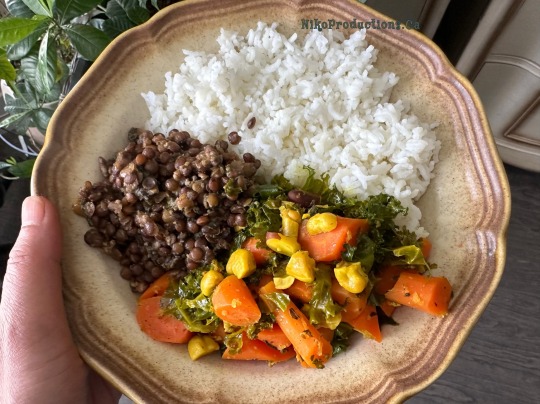

AUGMENTING: basmati rice and carrots 🍚🥕
EXTRACTIVE: lentils, kale, cashews, and brazil nuts 🫘🥬🌰
Mung beans cook quicker, but lentils taste better, in my opinion 😋
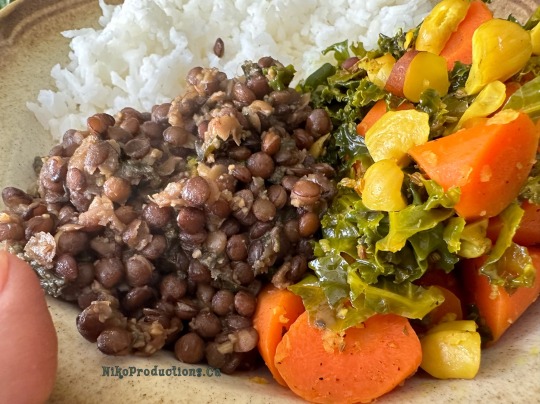
I love how colourful this looks 😍
Tastes just as good.

#Food #Nourishing #Delicious #Sattvic #Sattva #Vegetarian #Healing #Ayurveda #Agni #Digestion #Life #Gratitude
2 notes
·
View notes
Text
Holistic Solutions for PCOS with Adinath Ayurveda
Polycystic Ovary Syndrome (PCOS) is a common hormonal disorder affecting millions of women. Conventional treatments often address symptoms, but Ayurveda focuses on holistic healing to target the root cause. At Adinath Ayurveda, we specialize in providing effective ayurvedic treatment for PCOS with a personalized approach to balance hormones naturally.

How to Cure PCOS Permanently ?
Ayurveda emphasizes a combination of lifestyle modifications, herbal remedies, and therapies to manage and potentially reverse PCOS. With the right guidance, women can restore hormonal balance, regulate menstrual cycles, and improve fertility. Adinath Ayurveda recommends adopting a Sattvic diet, practicing yoga, and detoxifying the body through Panchakarma therapies to achieve sustainable results.
Our experts focus on helping you understand how to cure PCOS permanently by addressing factors like stress, poor diet, and sedentary lifestyles that contribute to this condition. Following a disciplined regimen designed for your body type can bring long-term relief.
Best Ayurvedic Medicine for PCOS
Ayurvedic herbs have been trusted for centuries to treat gynecological disorders, including PCOS. Some of the best ayurvedic medicines for PCOS include:
Ashwagandha: Reduces stress and balances cortisol levels.
Shatavari: Supports ovarian health and improves hormonal balance.
Triphala: Aids in detoxification and enhances digestive health.
Neem: Effective in reducing insulin resistance.
At Adinath Ayurveda, we create customized herbal formulations to suit individual needs, ensuring safe and effective treatment.
Ayurvedic Treatment for PCOS
Our holistic ayurvedic treatment for PCOS includes herbal remedies, detox therapies, and guidance on dietary and lifestyle changes. Key components include:
Panchakarma Detox: Eliminates toxins and rejuvenates the reproductive system.
Herbal Support: Tailored herbs to regulate hormones and improve metabolism.
Dietary Guidance: Recommendations for foods that reduce inflammation and promote healing.
Adinath Ayurveda is committed to empowering women to reclaim their health. With a proven track record in PCOS treatment, we stand as a trusted choice for holistic healing.
Rediscover balance and vitality with Adinath Ayurveda, your partner in achieving permanent relief from PCOS. Take the first step toward wellness today!
#weight loss tips#weight loss diet#belly fat#fat burning#fat loss for women#ayurvedic treatment#ayurvedic medicine#ayurvedic herbs
2 notes
·
View notes
Text


Sattvic food, rooted in ancient Indian wisdom, is a harmonious and nourishing dietary choice. It emphasizes pure, unprocessed, and natural ingredients that promote physical and mental well-being. This diet encourages balance, clarity, and a connection to one's inner self, fostering a healthier and more mindful way of living.
.
𝐅𝐨𝐫 𝐌𝐨𝐫𝐞 𝐈𝐧𝐟𝐨 𝐕𝐢𝐬𝐢𝐭: https://www.yogateachertrainingrishikesh.com/
𝐌𝐚𝐢𝐥 𝐔𝐬: [email protected]
𝐂𝐚𝐥𝐥/𝐖𝐡𝐚𝐭𝐬𝐚𝐩𝐩: +91-7017276754
#yogainrishikesh#yoga#rishikesh#yogattc#rishikeshyoga#yogateachertraining#yogainspiration#india#yogapractice#yogaindia#yogainindia#yogateacher#yogalife#yogacourse#yogaeveryday#yogaretreat#rishikeshdiaries#yogalove#yttc#hatha#yogagirl#yogateachertrainingrishikesh#yogaeverydamnday#meditation#yogi#yogaeverywhere#hoursyogattcinrishikesh#yogini#hathayoga#yogarishikesh
2 notes
·
View notes